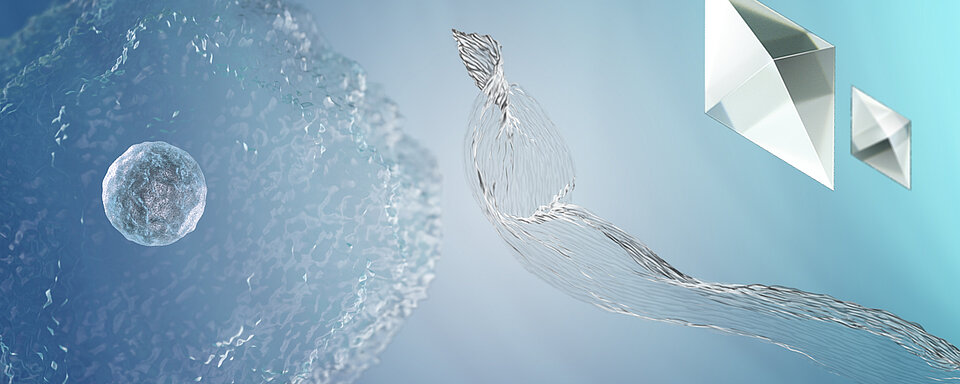Red blood cells (RBC)
Red blood cells are 6-10 µm in diameter, show a biconcave, disc-shaped appearance and do not contain a nucleus or nucleic acid content.
The presence of red blood cells in urine (haematuria) is differentiated into glomerular and non-glomerular haematuria, depending on the cell morphology. Glomerular haematuria can indicate glomerulonephritis, as well as damages of the blood-urine barrier. Non-glomerular haematuria indicates microbleeds along the urothelium, either from injuries through catheters or kidney stones, from infectious and inflammatory conditions, such as UTI.

Parameter information
Non-lysed red blood cells
Non-lysed red blood cells represent the proportion of intact red blood cells from the total amount of red blood cells.
Lysed red blood cells
Lysed red blood cells, also known as ghost RBC, are membrane remains of red blood cells without any biological function. They represent the final step in the RBC lifecycle prior to clearance. In urine, lysed RBC are an artefact from preanalytics.
Small red blood cells
Small red blood cells, also known as microcytes, represent a fraction of the red blood cell population with a diameter of less than 5 µm. Small RBC might indicate the presence of a glomerulonephritis.
Large red blood cells
Large red blood cells represent a fraction of the red blood cell population with a diameter of more than 10 µm. Large RBC might indicate hypoosmotic urine composition and variation of the pH.
Flags
Isomorphic red blood cells
When these are present, there could be suspected bleeds along the urinary tract in context of haematuria, caused by infections, inflammations or irritations, e.g. by catheters or lithiasis.
Dysmorphic red blood cells
When these are present, there could be suspected haematuria of glomerular origin, indicating glomerular damage, e.g. in context of chronic kidney disease.
Mixed red blood cells
The presence of isomorphic and dysmorphic red blood cells in context of haematuria.

